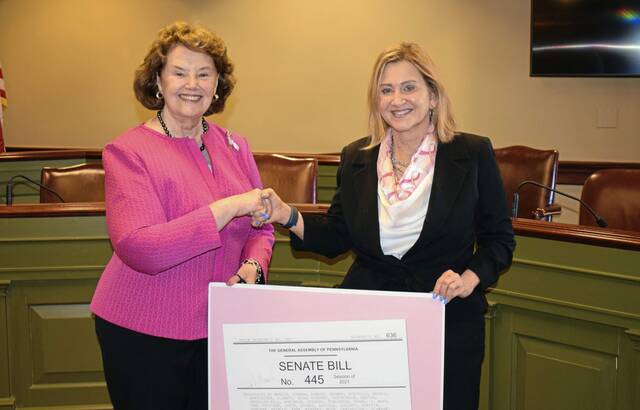Coverage for breast cancer early detection varies
Nearly 400,000 new cases of breast cancer will be diagnosed in the United States this year, according to the American Cancer Society, with women at a 1-in-8 risk of developing the disease.
Advocacy groups are continuing to push for early detection and treatment, which save lives and money. Experts say early detection screening methods include breast MRIs and ultrasounds, as well as genetic testing.
Breast MRIs are more than twice as effective as even 3D mammograms in detecting cancer, said Pat Halpin-Murphy, founder and president of PA Breast Cancer Coalition.
In Pennsylvania, the Legislature last year unanimously passed Act 1, which provides for that type of testing at no cost for people who are at high risk and who are covered by state-regulated insurance.
Across the country, 26 states have introduced and passed breast imagery legislation, according to Rebecca Birch, director of state policy and advocacy for the Susan G. Komen foundation.
But that still covers only 20% to 30% of the population, she said. Federal regulations would help to cover the rest.
“One of the realities is when you pass state legislation, you can only impact plans regulated by the state or commonwealth,” Birch said. “It’s a necessary step to get where we need to go because congressional legislation can take years.”
Pending in Congress is the Access to Breast Cancer Diagnosis Act, which would apply to people under Employee Retirement Income Security Act plans and those with high-deductible health savings plans.
It is likely the legislation will have to be reintroduced in the next session, Birch said.
“But I do see a momentum moving across the country,” she said.
In addition to saving lives, early detection saves money for the entire health care system, Birch said.
“There’s a high likelihood you’ll have better outcomes,” she continued. “Every stage you go up, the more the cost is to the health care system.”
In Pennsylvania, there’s another bill pending in the House that would cover patients who are not considered to be high risk but who previously received an abnormal test, Birch said.
It was referred to the insurance committee in January.
“We want to remove that financial barrier so you can move into treatment swiftly and have better outcomes,” Birch said.
To find out if you are covered under Act 1, patients should contact their insurance provider or their employer’s human resources department.
Paula Reed Ward is a TribLive reporter covering federal and Allegheny County courts. She joined the Trib in 2020 after spending nearly 17 years at the Pittsburgh Post-Gazette, where she was part of a Pulitzer Prize-winning team. She is the author of "Death by Cyanide." She can be reached at pward@triblive.com.
Remove the ads from your TribLIVE reading experience but still support the journalists who create the content with TribLIVE Ad-Free.

